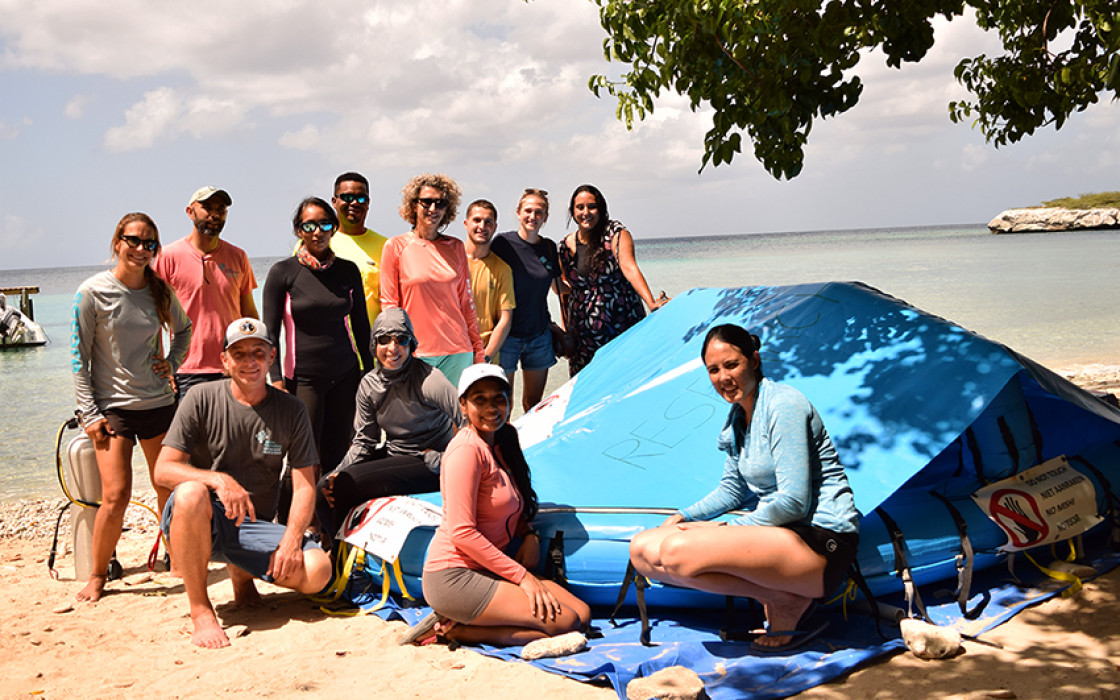Partnership Announcement: Coral Seeding on Belize
Published at: December 17th, 2021 by Carin JantzenWe are proud to announce that we have committed to two new partnerships in Belize within our mentor program. Together with the University of Belize and Fragments of Hope, we aim at fostering the implementation of coral seeding on-site.
Partnership Announcement: Implementing Coral Seeding in Belize
We are proud to announce that we have committed to two new partnerships in Belize within our mentor program. Together with the University of Belize and Fragments of Hope, we aim at fostering the implementation of coral seeding on-site.
Belize provides a thriving and diverse flora and fauna above as well as underwater. Its extended reefs are part of the Mesoamerican Barrier Reef System and designated as UNESCO World Heritage Site. Belize’s conservation efforts and protection zones are commendable among Caribbean states, and reef enhancement efforts started comparatively early.
Fragments of Hope is a not-for-profit community-based organization founded by Lisa Carne and officially registered in 2013 in Placencia Village, Belize. The organization’s work is one of the few shining examples for a successful implementation of coral gardening, i.e., reef enhancement using coral fragments. Fragments of Hope follows a science-based and comprehensive strategy, including critical aspects such as training fishers and working with regulatory agencies.
"We are proud that we have more than 10 years of data on coral survival ship, spawning, bleaching history, and genetics,” says Lisa Carne, founder and Executive Director of Fragments of Hope. “We know not every reef can be restored, but we think we have some good guidelines on site selection criteria and selecting parental coral colonies. We are pleased that national, regional, and international folks from multiple disciplines join us in our work to enhance Belize’s reefs.” The organization also partners with the Belize Fisheries Department, Healthy Reefs Initiative, the University of Belize, and the Smithsonian Institute, as well as external universities.
In Laughing Bird Caye National Park alone, over 85,000 fragments of corals were outplanted by Fragments of Hope within a hectare shallow fringing reef. This was their first site for reef enhancement, which started in 2006 with a live coral cover of only 6% and has now reached a live coral cover between 60% and 70%, respectively. “Now, we are eager to try SECORE’s coral CRIBs (Coral Rearing In-situ Basins),” says Carne. "We have background data on genetics and life history of three Acropora taxa at Laughing Bird Caye National Park, namely elkhorn (Acropora palmata) and staghorn (A. cervicornis) corals, as well as the hybrid of the two species (A. prolifera). So, we hope to rear baby corals from known parental lineages, which will be super exciting.”
The University of Belize, through its Environmental Research Institute, has been involved with coral restoration since 2016. “Coral restoration is part of the institute's long-term program to enhance coral reef resilience on the Turneffe Atoll and is embedded within the coastal resilience program of the Environmental Research Institute, “explains Dr. Leandra Cho-Ricketts, Director of the University of Belize’s Environmental Research Institute. In August 2016, her team took part in their first coral restoration training in Puerto Morelos with Dr. Anastazia Banaszak (National Autonomous University of Mexico), SECORE’s lead partner in Mexico. Cho-Ricketts and her team started a collaboration with Banaszak to applying the corals’ sexual reproduction for restoration purposes in Belize.
The institute’s field work is conducted at the Calabash Caye Field Station on Turneffe Atoll, where the university teams with NGO co-management partners to share the best practices and results of coral enhancement efforts. However, initial trials with mountainous star (Orbicella faveolata) and elkhorn (Acropora palmata) coral lead only to limited success. “Since 2016, when we started sexual restoration activities, we have had only one recruit from either the nurseries or outplanting survive, due to various environmental and technical factors,“ says Cho-Ricketts.
“We are excited to partner with SECORE and learn about implementing the floating coral nurseries, the coral CRIBs (Coral Rearing In-situ Basins) in Belize. We are optimistic that these will help us improve our larval propagation (i.e., growing baby corals) and enable us to produce coral recruits that survive outplanting,” says Cho-Ricketts. And they have ambitious plans how to expand their coral seeding work: “Our vision is that in the next five years we can begin to increase elkhorn coral populations within the Turneffe Atoll through recruits by cost-effective sexual restoration, partnering with the tourism sector to monitor and track our efforts. We also plan to include other large corals, such as brain corals, in the restoration program.”
As part of reaching these goals, Dr. Leandra Cho-Ricketts and Ninon Martinez from the University of Belize, and Victor Faux and Nicole Craig from Fragments of Hope joined our most recent coral seeding training in Curaçao two months ago. SECORE’s mentor and training team shared insights and best practices of applying restoration techniques using the corals’ own reproduction and implementing the relevant tools and technologies. The first part of the introductory training was held online earlier this year, so all participants (Belize partners and three additional groups) were eager to learn the hands-on practice.
“I am thrilled about these new partnerships and Belize joining our network,"
says Dr. Dirk Petersen, SECORE’s Executive Director. “Both, Fragments of Hope and the University of Belize with their solid science and coral restoration work are the ideal leads for a successful implementation in a country that highly depends on tourism and therefore depends on intact coral reefs.”
We will keep you updated about these encouraging and ambitious efforts!

